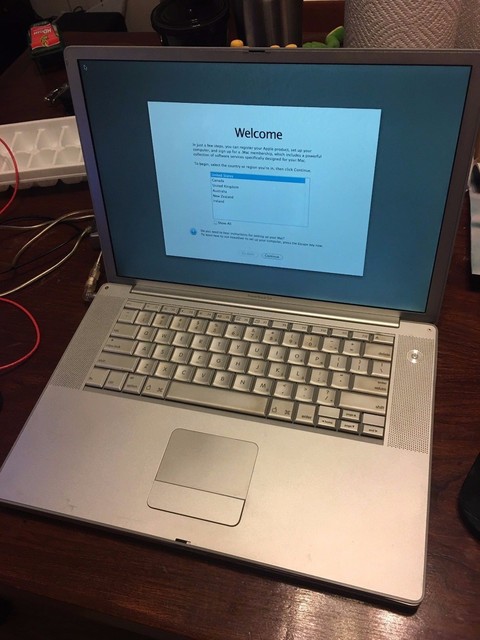


This will wake up your ‘Book and restore use of the built-in display. To resume use of the internal display, you need to disconnect the external display, put the computer to sleep, and then open the lid. The TiBook is designed to run safely in closed lid mode, but if yours runs hot (perhaps due to overclocking or high ambient temperatures), you may want to open the lid when in closed lid mode: The screen will remain off and the computer will more readily vent heat from the CPU. Since all video RAM is now dedicated to the external monitor, you may have more colors available at higher resolutions. The built-in display will remain off, and the external monitor will become your only display.

Your ‘Book will go to sleep, but you can wake it by moving the mouse or using the keyboard. Power up your ‘Book until the desktop appears on the external display and then close the lid. To used closed lid mode, your ‘Book must be plugged into the AC adapter and connected to an external display and a USB mouse and keyboard (you might also want to consider external speakers). (It wasn’t until the next revision of the PowerBook G4 design that Apple managed to squeeze a SuperDrive into the 1″ thin design.)Ĭlosed Lid Mode: TiBooks support “lid closed” (or clamshell) mode, which leaves the built-in display off and dedicates all video RAM to an external display. The VGA port on the older PB G4 has been replaced with DVI to support Apple’s flat panel displays, and these ‘Books originally shipped with a DVI-to-VGA adapter.īoth models include a 1 MB level 3 cache and an 8x8x24x Combo drive that can burn CDs as well as read DVDs. This is the oldest PowerBook to fully support Quartz Extreme graphics (part of OS X 10.2 and later). 1152 x 768) and ATI Mobility Radeon 7500 graphics with 32 MB of video memory. If you’re like me, you probably have some spare Mac hardware like this floating around somewhere (in my case, I just decommissioned a Mac mini G4 that ran as a backup server for almost a decade).A bit more than six months after speed bumping the TiBook to 550 and 667 MHz, Apple overhauled the titanium workhorse with still faster processors (667 and 800 MHz) a brighter, higher resolution screen (1280 x 854 vs. Apple PowerMac G5 (only a couple models are supported, and MorphOS will only use up to 1GB of RAM, no matter what).Apple PowerMac G4 (nVidia GeForce2 MX and nVidia GeForce4 MX/Titanium cards are not supported, audio supported only with certain models).Apple PowerMac Cube (bundled USB audio hardware not supported).Apple PowerBook G4 (models with a Radeon graphics only).Apple eMac (1.25GHz and 1.42GHz models only).Here’s a list of compatible machines, which I scraped from the official MorphOS Hardware Compatibility Page. Fortunately, MorphOS runs on a nice variety of Apple-brand machines from the early 2000s. Step 1: Check hardware compatibilityīefore any Amigalike magic begins, you need to make sure MorphOS 3.5 will work on your system. So here, without further ado, is how you can join the “Amigalike” renaissance-or just play around with a different OS for a few hours.


 0 kommentar(er)
0 kommentar(er)
